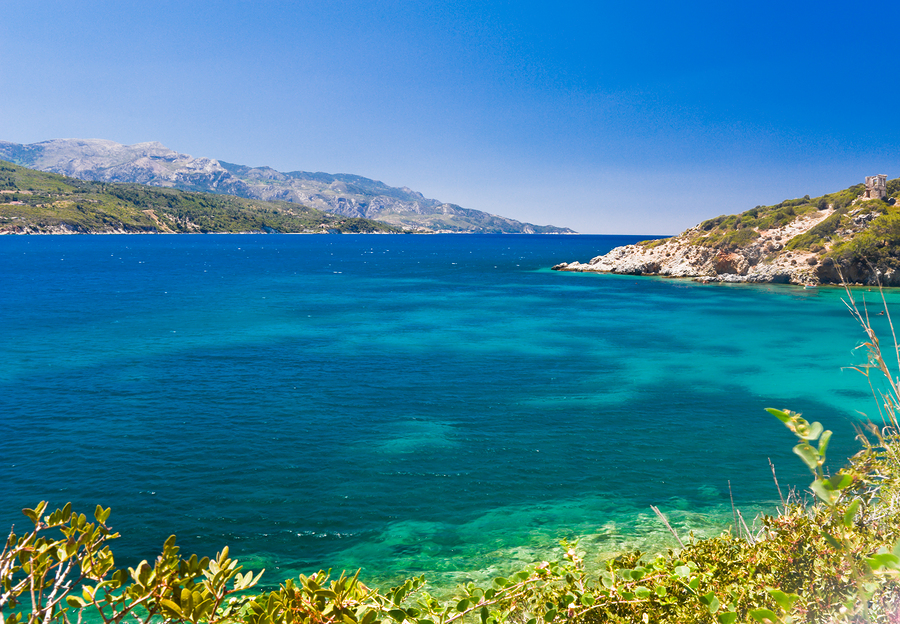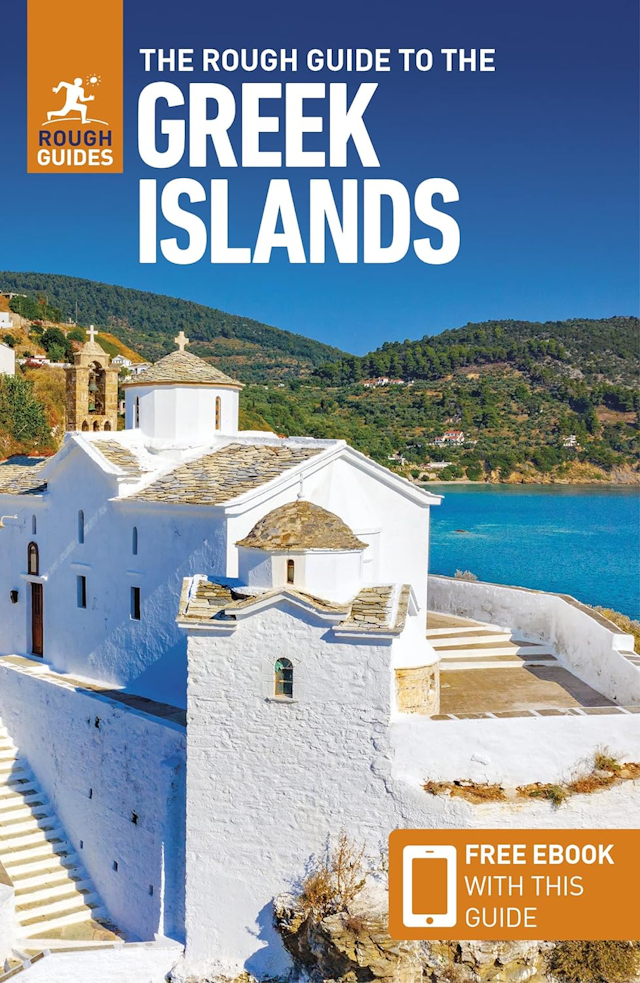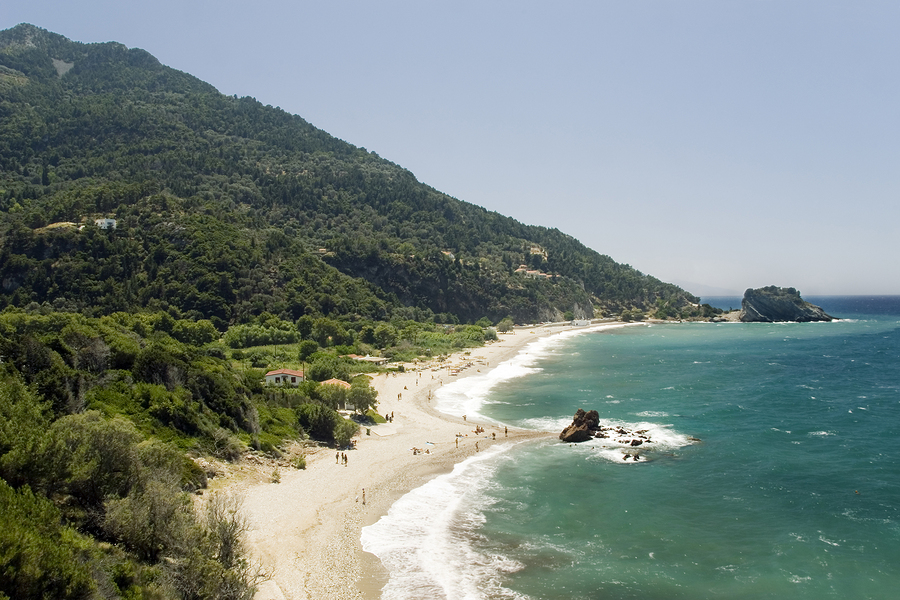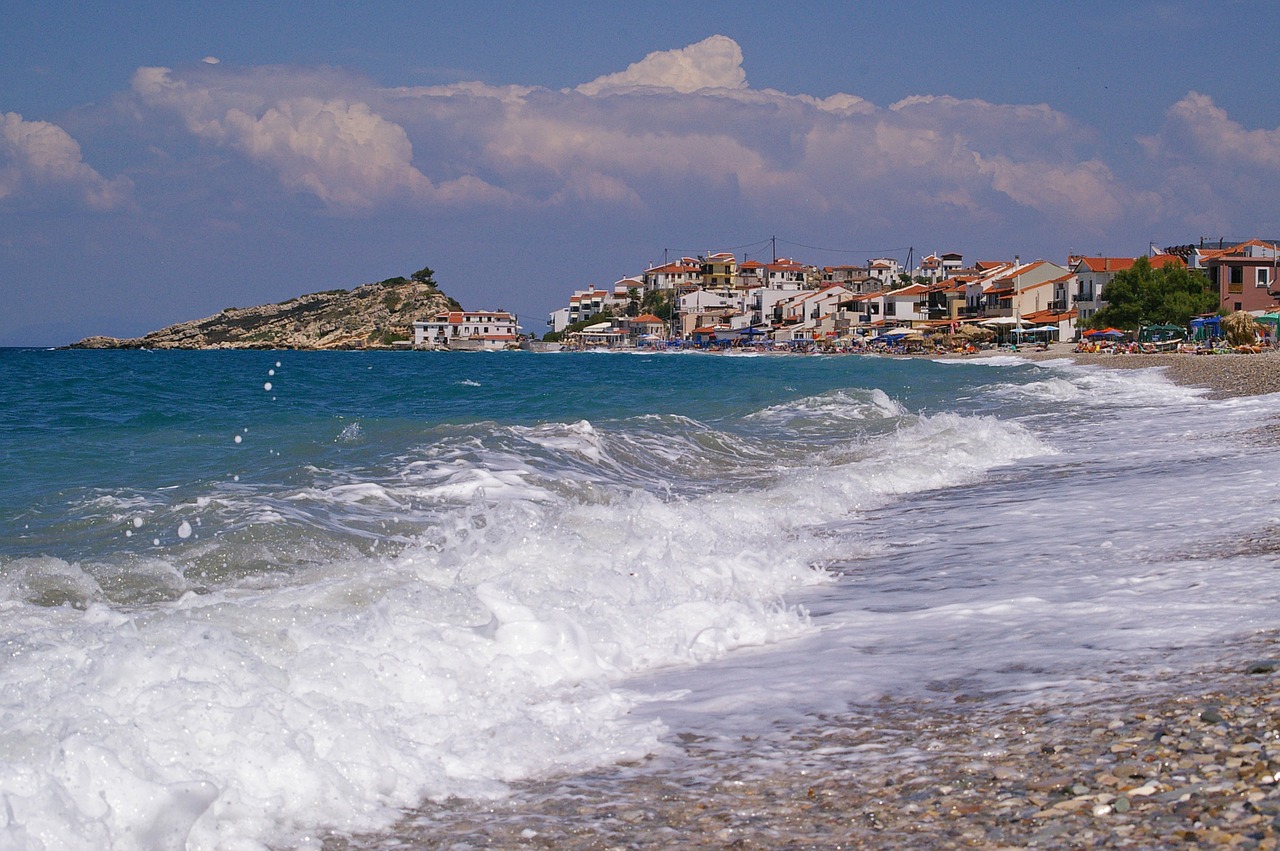- HOME
- NE Aegean Isles
- Samos
- Best Time to Visit Samos
Best Time to Visit Samos
Greece Travel Secrets picks the best time to visit Samos, with a monthly summary of the weather, plus hotel prices and special events to help plan a visit.
Everyone dreams of a vacation in a place where the climate is both welcoming and rejuvenating, and that place could be Samos. This picturesque Greek island, located in the Aegean Sea, close to the Turkish coast, is famously known for its enchanting beaches, vineyards and ancient remains.
The Samos climate is typically Mediterranean, characterized by hot, dry summers and mild, rainy winters. But as is the case with any travel destination, timing your visit perfectly can enhance your experience tremendously.
Best Month to Visit Samos
Let’s start with January. During this month, the Samos climate gets the coldest. Expect average temperatures around 54°F (12°C) and cold nights that could drop to 39°F (4°C). Rainfall measures about 3.8 inches (96 mm), a bit higher compared to other months. But as expected during the offseason, hotel prices are much lower which can give you great value for your money. There isn't any significant snowfall to note.
As we move into February, temperatures slightly increase with the average at around 55°F (13°C). The rainfall peaks at 3.9 inches (99 mm), making it the wettest month of the year in Samos. Despite the weather, February hosts the Carnival of Samos, a lively event with music, dance, and colourful costumes that is a unique experience to witness.
In March, the signs of spring are quite evident. The temperatures rise to a comfortable 59°F (15°C). Though rains may still occur, about 2.6 inch (66 mm), they are considerably less compared to the first two months. Hotel prices are still relatively low, offering budget-friendly accommodation options.
April is when Samos starts to display its Mediterranean charm with sunny, clear days. Temperatures are comfortably warm at 66°F (19°C) during the day and a low of 50°F (10°C) during the night. Rainfall measures around 1.5 inch (38 mm). Easter celebrations are usually in April, with parades, feasts, and firework displays.
May brings a more summery feel with an average temperature of about 74°F (23°C), and rainfall dipping to just 0.9 inches (23 mm). This period sees an upswing in visitors, so the hotel prices start to edge up. The Feast of Agios Konstantinos in May is a traditional celebration representing Greek culture.
June welcomes the official start of summer, with temperatures averaging around 82°F (28°C), perfect for beach hopping and exploring the beautiful landscapes of Samos. Rainfall is extremely low, averaging 0.3 inches (7.6 mm). The island gets busier, and the hotel prices reflect the demand. The Samos Wine Festival in June is a must-visit for wine lovers. Samos is famous for its wine, some of which goes into the unique Greek after-dinner drink, Metaxa.
July showcases Samos in its full summer glory, as temperatures soar to an average of 87°F (31°C). Rainfall is pretty much non-existent during this time, with an average of 0.1 inches (2.54 mm). It's a peak tourist season, so expect crowded beaches and higher hotel prices. The Festival of Dionysus offers an interesting escape with theatre performances.
August continues the heat wave with an average temperature of around 87°F (31°C). Rainfall is negligible, and the island is packed with tourists basking under the Mediterranean sun. Prepare to pay peak-season prices for hotels.
In September, temperatures start to cool slightly to 82°F (28°C). The probability of rain begins to go up, but it's generally very low with only about 0.8 inches (20 mm). The summer crowd starts to thin. Sightseeing and open-air activities are perfect this month, and hotel rates are more reasonable.
October brings a more autumnal feel. With temperatures averaging 74°F (23°C), and rainfall picking up slightly to 1.6 inches (40.6 mm), the Samos weather turns very pleasant. The Ochi Day celebration in late October offers a dose of patriotism and tradition. Accommodation rates become more affordable as the tourist crowds continue to dwindle.
November signals the onset of winter, with temperatures dropping to an average of 63°F (17°C), and rainfall increasing to 2.7 inches (68.6 mm). It's a low tourist season so expect minimal crowding and more favorable hotel rates. It’s a good time to visit museums to explore the island’s rich history.
December rounds off the year with a more wintery chill. The average temperatures drop to around 57°F (14°C), and the rainfall measures about 3.2 inches (81 mm). It’s definitely offseason; however, you could experience a traditional Greek Christmas if you plan your visit during this time. Hotels offer great deals during this period.
Best Time to Visit Samos
So, what's the best time to visit Samos? While the Samos weather plays a substantial role in the decision, it truly depends on what you're looking to experience. Are you looking for warm beach days or to be part of traditional festivities? Do you prefer avoiding the crowds and enjoying lower hotel rates, or do you like the animated atmosphere during the peak season?
If you're a sun-worshipper who loves long days at the beach, the summer months from June to August would offer the idyllic setting. However, do expect higher hotel rates.
If you wish to experience the cultural events and traditional Greek festivities, time your visit with the Carnival in February, Easter in April, the Samos Wine Festival in June, or the Festival of Dionysus in July.
For travellers who are keen on a serene and laid-back vacation, the shoulder season months of May, September and October can provide the best of both worlds - decent weather, fewer crowds, and moderate hotel rates.
And if your main goal is to explore the rich history and heritage of Samos while keeping a strict check on your budget, the winter months of November to March could be the ideal time. The Samos climate is mild during winters, and although wet, does not pose significant inconvenience to indoor activities and explorations of historical and archaeological sites.
Knowing the best time to visit Samos can make your trip all the more rewarding, so we hope this little guide helps.
Latest Posts
-
Ten Best Budget Hotels on Santorini
Greece Travel Secrets picks the ten best budget hotels on Santorini, some with caldera views, some near beaches and some close to the heart of Fira. -
No Ferries in Greece on April 9 as Seamen Join Nationwide Strike
The Pan-Hellenic Seamen’s Federation (PNO) has announced its participation in the 24-hour strike called by the General Confederation of Greek Labor (GSEE) on Wednesday, April 9. The strike, which will… -
Andros: Greece’s Top Hiking Island for 2025
Andros, named Greece’s top hiking island for 2025 by Conde Nast Traveler, boasts diverse landscapes, scenic trails, cultural charm and stunning beaches. -
Karpathos: One of Europe’s Best-Kept Travel Secrets
The Greek island of Karpathos, a true hidden gem, has earned a spot on GEO magazine’s list of Europe’s nine best-kept travel secrets. -
Mavros Gatos: A Genuine Neighborhood Taverna Operating in Pangrati Since 1963
Among the many city eateries offering modern and classic Greek cuisine, Mavros Gatos in Pangrati stands out as a prime example of what a true traditional taverna should be today. -
Matt Damon and Christopher Nolan Arrive in Messinia to Start Filming “Odyssey” – First Images Released
A total of about 180 people arrived on two direct flights from Morocco, including actors as well as the core production team. -
Ten Best Dishes in Greece
Greece Travel Secrets lists the ten best dishes to try in Greece, especially if it’s your first visit, and also discover the best places to find them. -
Athens’ Most Coveted Culinary Hotspots
Athens sizzles with culinary creativity, blending timeless classics and innovative flavors at unforgettable dining spots. -
Culture Ministry Announces Free Admission to Greek Museums and Sites
Greece’s public museums and archaeological sites will offer free entry on Sunday, March 2, and Thursday, March 6, following a decision by the Greek Culture Ministry. According to the ministry, on the… -
Syros’ Hidden Soul: The Timeless Charm of Apano Meria
Apano Meria, rich in geology and Cycladic history, captures the timeless charm of the Greek islands.











